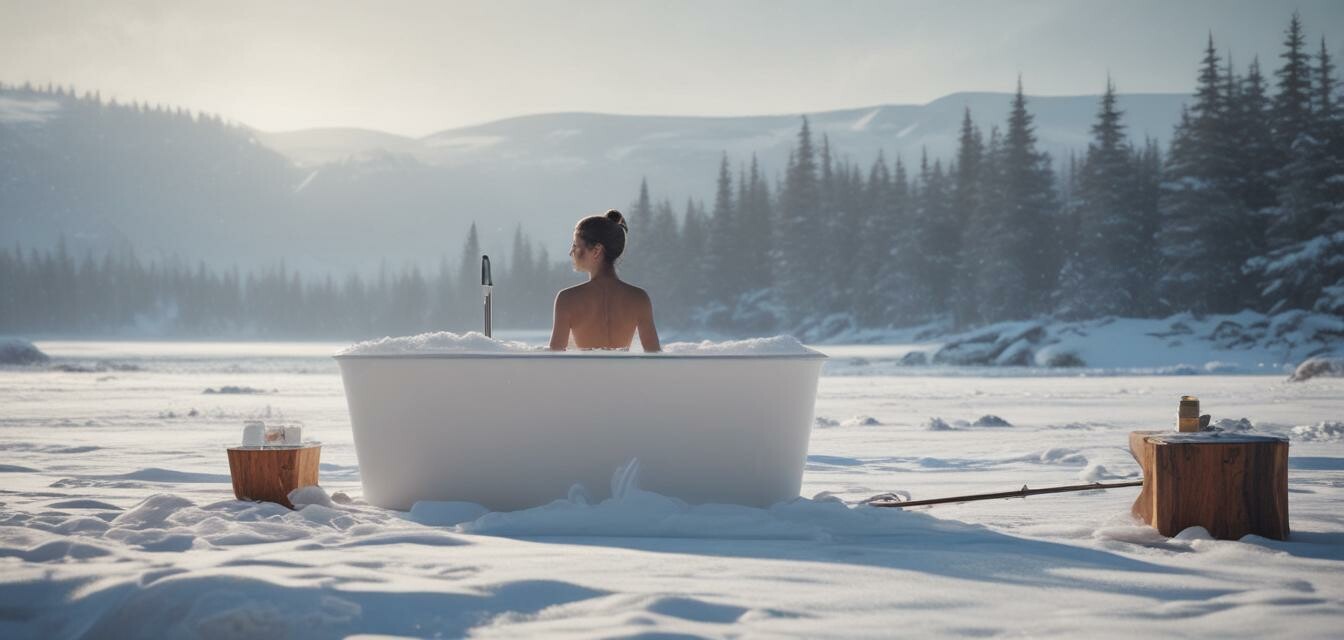
Global Perspectives on Ice Bath Practices
Key Takeaways
- Different cultures have unique approaches to ice baths.
- Ice baths offer various potential benefits across different populations.
- The use of ice baths is deeply rooted in tradition in many societies.
- Modern technology and techniques enhance the ice bathing experience.
- DIY ice bath setups can draw inspiration from global practices.
Ice baths have become increasingly popular as a recovery technique in sports and wellness communities worldwide. Yet, the way different cultures adopt and adapt to this practice varies greatly. In this article, we will explore how various regions of the world engage with ice baths, showcasing unique practices and the potential benefits associated with them.
The roots of ice baths in different cultures
Ice baths are not new; they have roots in many ancient traditions. Here's a brief insight into how various cultures incorporate cold exposure methods into their lives:
| Culture | Traditional Practice | Cold Exposure Technique |
|---|---|---|
| Japanese | Misogi | Cold waterfall purification rituals |
| Nordic | Sauna and ice swimming | Contrast bathing |
| Russian | Banya | Cold plunge after sauna sessions |
| Inuit | Cultural cold exposure | Submerging in icy waters |
Japanese misogi
In Japan, misogi is a cleansing ritual involving exposure to waterfalls or icy streams. This practice is not only about physical purification but also about mental clarity and spiritual awakening. Practitioners believe that immersing themselves in cold water helps to clear the mind and fortify the body.
Nordic sauna culture
Nordic countries have a rich tradition of combining sauna sessions with cold exposure. After sweating it out in a hot sauna, many jump into an ice-cold lake or roll in the snow. This contrast bathing is thought to stimulate circulation and improve overall health, creating a well-rounded recovery practice.
Russian banya
The banya is an essential aspect of Russian culture, where the sauna experience is followed by a plunge into cold water. This practice is believed to strengthen the immune system and promote relaxation, making it a beloved custom among many Russians.
Inuit cold exposure
The Inuit, native to the Arctic regions, have a longstanding tradition of cold exposure. They endure harsh winter climates and utilize icy waters as part of their lifestyle. Observations suggest that the Inuit's natural adaptation to cold plays a key role in their health and resilience.
Modern trends in ice bath therapy
Although many of these practices stem from ancient wisdom, modern technology has given rise to new trends in ice bath therapy. Here are a few noteworthy trends:
- Portable ice bath tubs: A growing market for affordable DIY setups allows more people to experience cold therapy at home.
- Ice bath challenges: Popularized on social media, these challenges encourage individuals to share their ice bath experiences.
- Scientific research: Increased studies and publications focus on the physiological effects of ice baths, fostering greater understanding and acceptance in sporty circles.
The emergence of DIY ice baths
With advancements in materials and design, DIY ice bath solutions have become feasible for many. Enthusiasts can now create their own setups at home, drawing inspiration from traditional practices. To explore some options for starting your DIY ice bath journey, visit our section on Ice Bath Tubs.
Health benefits of ice baths
Many people believe that ice baths can provide an array of benefits, which have been explored but are still not entirely understood in terms of their mechanisms. Here are a few commonly discussed benefits:
- Reduced muscle soreness after exercise
- Enhanced recovery times
- Improved mood and well-being
- Increased alertness and energy post-exposure
Personal recovery sessions
Creating a personal recovery routine can be enhanced by incorporating ice baths. Their varied practice across different cultures offers a chance to find what resonates most with your lifestyle. The exploration of global practices can even introduce new techniques! For further information on accessories that can complement your ice bath setup, navigate to our Ice Bath & Recovery Accessories section.
Combining wisdom with modern techniques
The blend of traditional wisdom and modern advancements is what makes the practice of ice bathing more accessible. Inspirations can originate from various practices, but the fundamental concept remains consistent: using cold for recovery and wellness.
Conclusion
The global perspectives on ice baths present a fascinating patchwork of history, culture, and wellness. As we embrace these insights and adapt them to modern practice, individuals can discover their own path to recovery. Whether through Japanese misogi or Nordic contrast baths, ice bathing can serve as a powerful tool for personal recovery. Remember to always consider your own response to cold exposure, and take the time to customize your practice according to your needs.
Pros
- Adaptable to various cultural practices.
- Potentially enhances recovery and performance.
- Offers a unique way to connect with ancient traditions.
Cons
- May not be suitable for everyone; personal tolerance varies.
- Can require proper setup and maintenance for DIY options.
